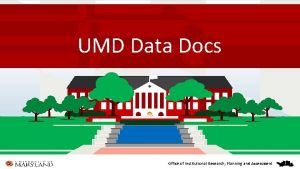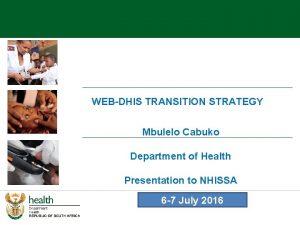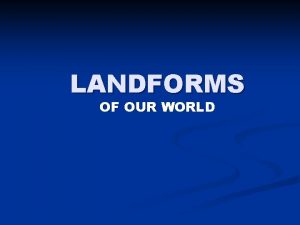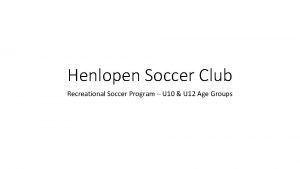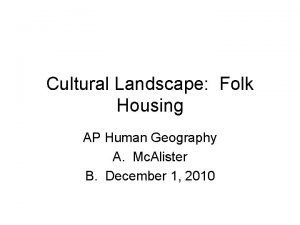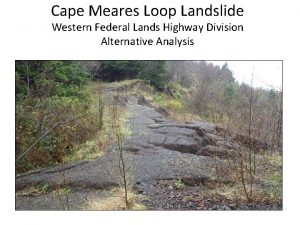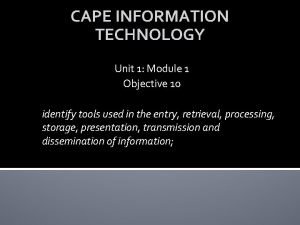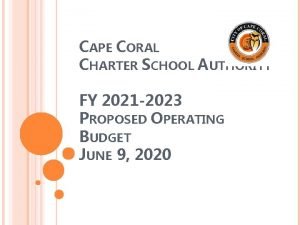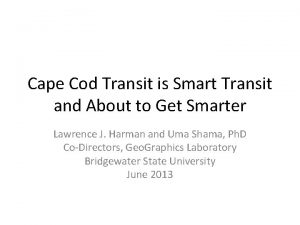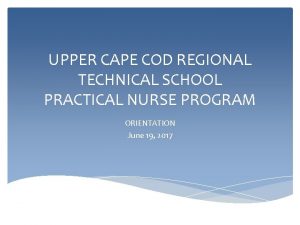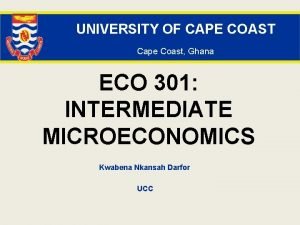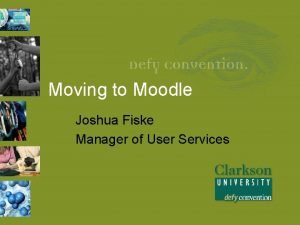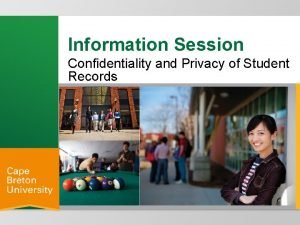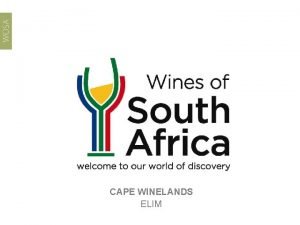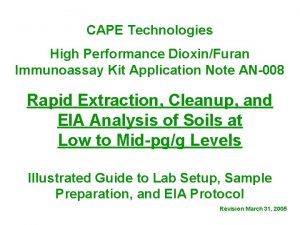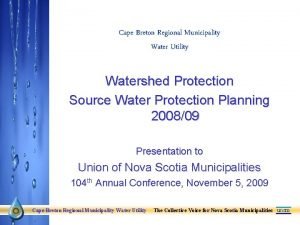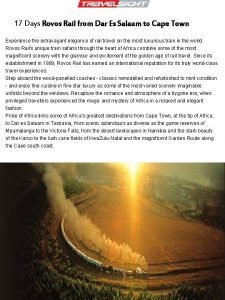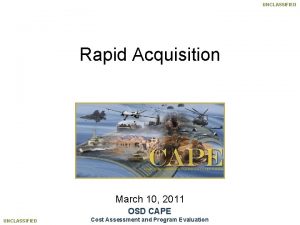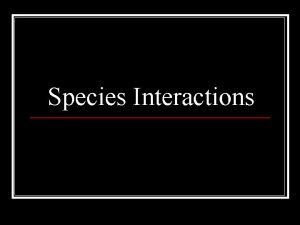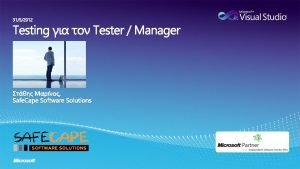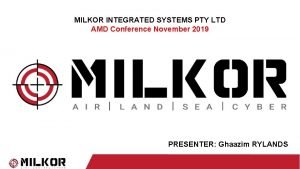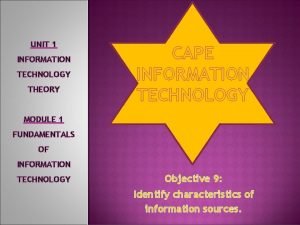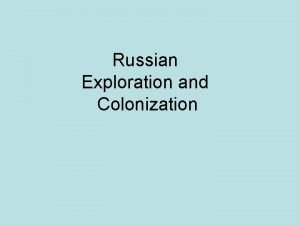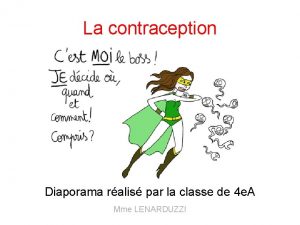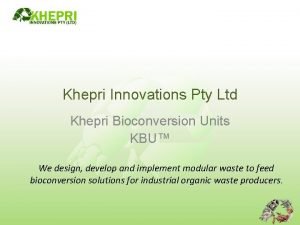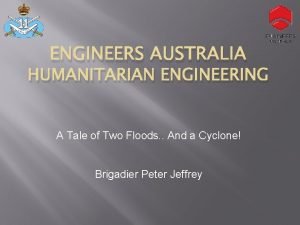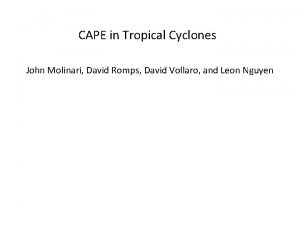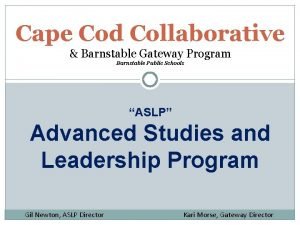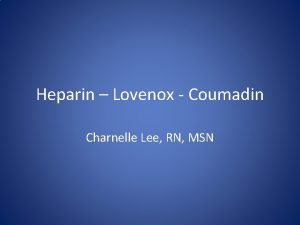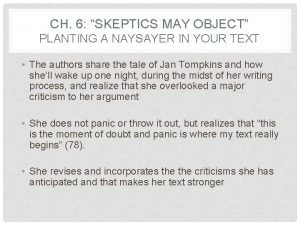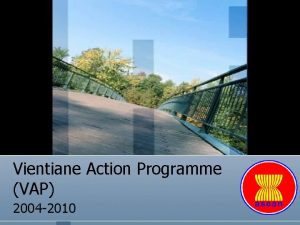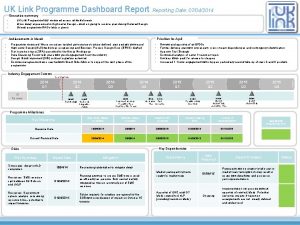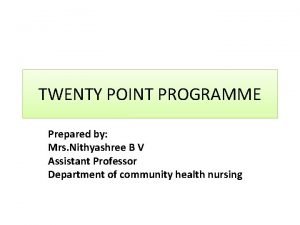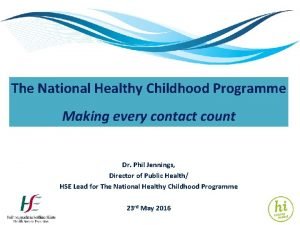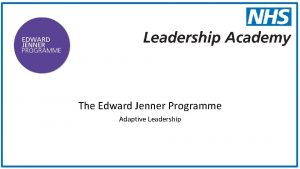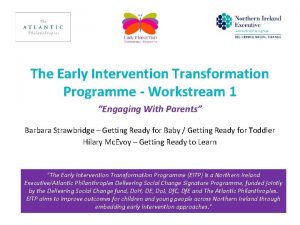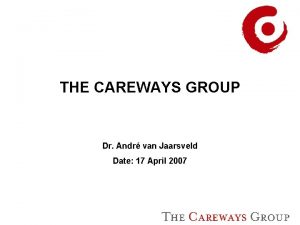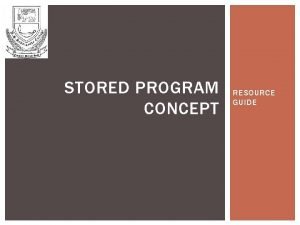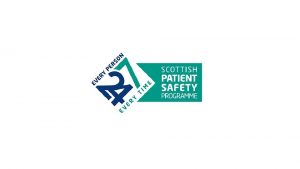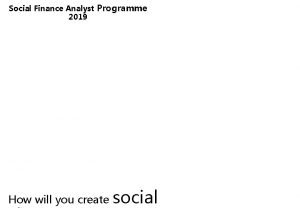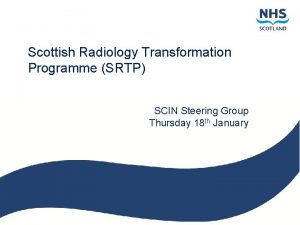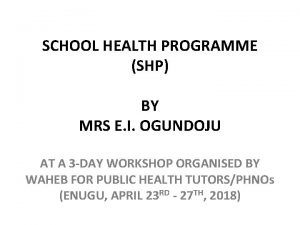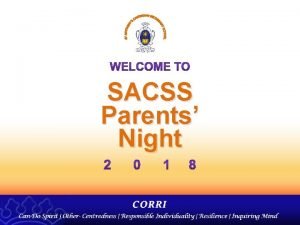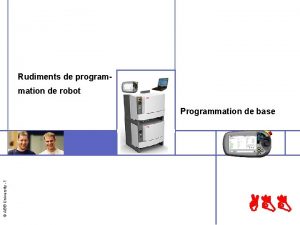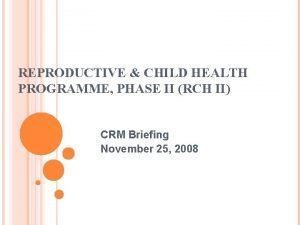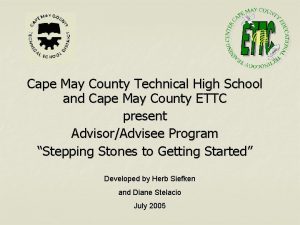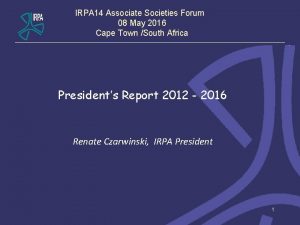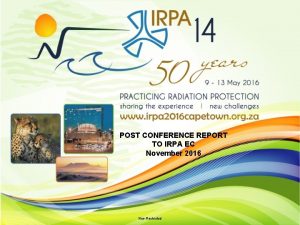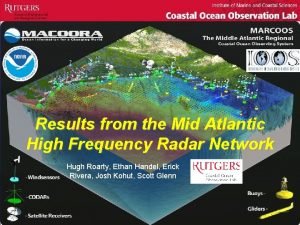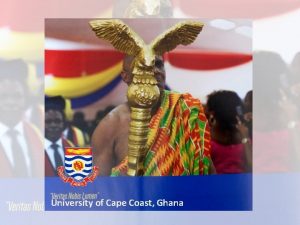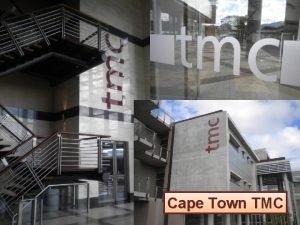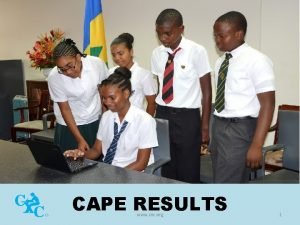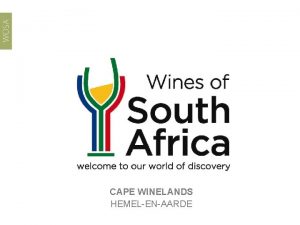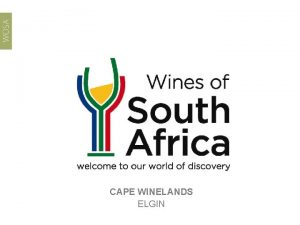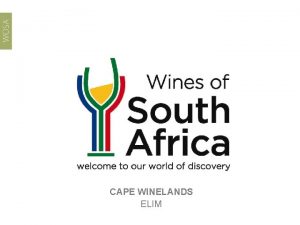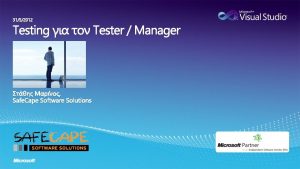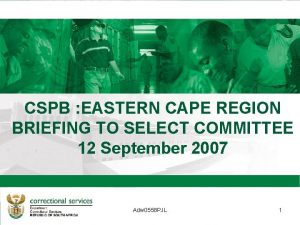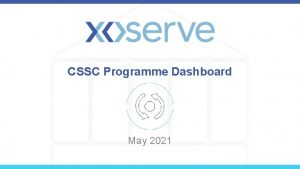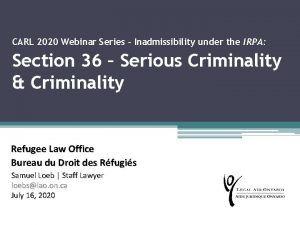Technical Programme Summary IRPA 14 May 2016 Cape































































- Slides: 63

Technical Programme Summary IRPA 14 May 2016 Cape Town International Radiation Protection Association Non-Restricted

IRPA 14 -AREAS • • • Area 1. Fundamental Science Area 2. Policy, Standards and Culture Area 3. Medical Area 4. General Ionising Radiation Protection Area 5. Optimisation and Design of New Facilities Area 6. Radiation Detection and Dosimetry Area 7. Environment and Natural Background Area 8. Transport / Sealed Source Management Area 9. Non-ionising Radiation Area 10. Emergency Preparedness and Management Area 11. Decommissioning, Waste Management and Remediation 2 Non-Restricted

Summary Area 1 Fundamental Science: Contents Sessions Titles Plenary • State of the art in fundamental science Panel Plenary • Challenges in low doses radiation research Special Scientific None • • • Poster Refresher Courses Physics, Chemistry and Biology Epidemiology and Social 82 Approved • • Individual human radio-susceptibility DACTARI, a database for chemical toxicity and radiotoxicity assessment of radionuclides Non-Restricted

Physics & Biology- 1 • Effects of radicals to be differentiated from low energy electrons effects: under physiological conditions high damaging efficiency of LEE (Marc B. Hahn, Germany) • Effective dose used for radiation protection purposes: indicator of risk (John Harrison, UK) - confirmed by Hans Metzel (ICRU) • Short telomeres: biomarkers of prognosis? - follow-up of patients after radiotherapy (Radhia M’Kacher, France) - Reduced telomere length in liquidators (Rafi Betname, Belgium) • Mitochondrial proteins as biomarkers? (Mike Atkinson, Germany) Non-Restricted

Physics & Biology- 2 • Non-linear response to low-dose IR of lens of the eye cells (R. Quilan, UK) • DNA double strand break repair and predominant role of Homologous Recombination after a chronic exposure: medical practices and improvement of health risks management (Andreyan Osipov, Russia) • High efficiency of intra-tracheal DTPA / Alternative in vitro models to obtain information on contaminant properties and to test efficiency of treatments following an internal contamination (A. Van Der Meeren, France) Non-Restricted

Physics & Biology- 3 • Needs of continuous effort towards integration between modeling and experimental data in dosimetry (G. Baiocco, Italy) and in radiobiology (R. Quilan, UK) • Needs of mechanistic studies: Ø RBE values/ DNA damages useful for the follow-up in terms of occurrence of second primary cancers? (G. Baiocco) Ø Role of endothelial cells? (Mike Atkinson, Germany) • Out-of-field response resembled in-field response on the transcriptomic level in different tissue: needs of studies identifying molecular mechanisms underlying non targeted effects and to assess the relative contribution from physiological systemic contribution and IR pathways (Eva Forsell-Aronsson, Sweden) Non-Restricted

Epidemiology- 1 • Direct measurements more relevant than retrospective dosimetry for epidemiological studies (Rolf Michel, Germany) • No significant differences in any of the parameters (health effects, birth defects…) in High Level Natural Background Radiation Population as compared to normal LNBRP (Kerala: 3. 8 m. Gy/y – 35 m. Gy/y) (Biraj Das, India) • Requirement of new governance methods to better communicate in terms of IR risks: give to people the right to decide, mutual and collective learning experiences (Gaston Meeskens, Belgium) Non-Restricted

Epidemiology- 2 • A higher achievement of survivors could reflect social inequalities in long-term survival from childhood cancer (Agnès Dumas, France) • Needs of transparent methodology to define detriment: trend of total detriment decreases although radiation risks are constant (Jonas Buermeyer, Germany) • Derived attributable risk is low (Dominique Laurier, France) • Don’t forget psychosocial effects after a nuclear accident! (Richard Wakeford, UK) • Needs of transdisciplinary and participatory research (Giorgio Baiocco - Gaston Meeskens) Non-Restricted

Summary Area 2 Policy, Standards, Culture : Contents Sessions Titles Plenary • The Global Radiation Safety paradigm = Practising Radiation Protection, Sharing Experience, New Challenges Plenary Panel • • Ethics, Culture and Stakeholder Engagement International Standards Special Scientific None • • • Poster Refresher Courses Use of International Standards at Regional and National Level Ethics Stakeholder Engagement Nuclear and Radioactive Source Security Thursday Training and Education Thursday 10: 30 – 12: 00 Radiation Safety Culture and Management Systems 100 Approved • • Implementation of the new Basic Safety Standards Management systems for radiation safety Non-Restricted

Standards • Well developed and widely used • Some refinement probably needed and guidance – eye lens, radon in homes, use of dose constraints (particularly waste long term) • Regulation of medical exposure? • Appeal for stability, coherence and reasonable application • Not always easy to communicate to broader public 10 Non-Restricted

Ethics • On the agenda – promote good, avoid harm, prudence, justice, dignity • Avoid undue prudence • Post accident – empower people • Gender balance • Feedback on application in practice 11 Non-Restricted

Stakeholders • Need to develop trust • RP professionals need additional skills • Resource intensive 12 Non-Restricted

Security • Recognition of increasing needs • Involvement of RP professions necessary • Need for integrated safety / security / safeguards consideration • Standardization of approach, training and recognition evolving – industry and governments • Need for regulatory approach • Need is global 13 Non-Restricted

Training • EU project identified need for harmonization of RPE and RPO training and recognition mechanisms • Recognition of need for radiation safety training for all staff of nuclear regulatory authorities • Hands on training in medical facility of considerable benefit • Value of e-learning on large university campus • Radiation safety training for high school students – Japan / France exchange 14 Non-Restricted

Culture / Management Systems • Elements of safety culture recognized • Integrate in management system • Sector dependent – industry more easy 15 Non-Restricted

Summary Area 3 Medical: Contents Sessions Titles Plenary None Plenary Panel • International Response to the Bonn Call for Action Special • • Communication Workshop Practical Workshop: “UNSCEAR’s Global Survey on Radiological Exposure: Workshop on Data Collection” Medical Forum: Implementation of the basic safety standards in the medical sector • Scientific • • • Poster Refresher Courses Radiation Safety of Paediatric Patients Monday Implementation of New Technology and Techniques Tuesday Radiation Safety Compliance: Justification, Design & Audit Global Developments in DRLs and Assessment of Medical Exposures Optimisation of Staff Protection 140 Approved • • • Dosimetry and optimisation in computed tomography Hybrid imaging: Radiation safety challenges and compliance issues Computational dosimetry and modelling for medical applications Radiation protection challenges in radiotherapy Monitoring of dose to lens, skin and extremity Non-Restricted

Paediatrics High dose procs Asymptomatic pats Referral criteria Justification Ethics Culture Patient Training Comms Engagement

Justification We spend a lot of time talking/writing about … We need to spend more time doing it Non-Restricted

DRLs Equipment Optimisation Dosimetry Technology Standards QA Infrastructure Training

Qualified Experts Regulation Teaching Guidance Documents Philosophy Nat. Orgs. Communication Int. Orgs. Training material

General “At the moment we think locally and work internationally…. . We need to think internationally and work locally” Non-Restricted

Summary Area 4 General Ionising Radiation Protection: Contents Sessions Titles Plenary None Plenary Panel None Special • Panel Discussion: Nuclear Newcomers and New Build Scientific • Nuclear Applications/ Worker& Public Protection, Safety & Risk Assessment Industrial Applications / Worker & Public Protection, Safety & Risk Assessment Mining and Minerals Processing / Worker & Public Protection, Safety & Risk Assessment Various Applications / Radiation Detection and Response • • • Poster Refresher Courses 62 Posters Approved • • • Dose Reduction Optimisation at Nuclear Power Plants: ALARA Programs for Design, Operation & Decommissioning of Nuclear Power Plants Radiological protection in the oil, gas, and mining industries Internal dose assessments, including transuranics Non-Restricted

Panel discussion on Nuclear Newcomers/New Build • How to develop and embed the necessary RP knowledge and experience in all relevant parties, including operators, regulators and Technical Support Organisations? • Importance of the development of a RP culture. What are the special challenges of developing the right culture? • There needs to be interaction between the operator RP staff and the designers. How best to achieve this interaction? What key steps are appropriate? • What is the role of the wider international community in these processes? How can they contribute ? • There is likely to be great public interest, concern and sensitivity over radiation exposure. Nuclear power is a sensitive topic, and the emergency planning issues will also be sensitive. How should the RP community engage with these issues? Non-Restricted

Panel discussion on Nuclear Newcomers/New Build Identification of needs • Ministries – policy, international/regional obligations, oversight • Operator – corporate services, licensing, site • Regulator – standards, review and assessment, inspection • Support services – research, training, dosimeters, national standards/calibration, environmental monitoring, radioactive waste management, emergency planning and response Human resource development • Education • Training – technical, professional, support personnel • Experience – operational radiation protection, regulatory practice, technical support services • Use of consultants – terms of reference, handover, residual services Need for political stability and equitable access to the market Emergency management will need to meet post-Fukushima lessons Non-Restricted

Scientific Sessions (1) • Through the implementation of ALARA and also tools such as the ISOE database on occupational exposure, a decrease of the collective dose in nuclear power is observed in recent decades. • A second important thread has been the enhanced attention towards the radiological protection of the public, both from the perspective of NPPs discharges, and from other industrial activities, including mining. • Aspects related to capacity building, source term reduction, new technologies such as gamma ray imaging contribute to the decrease of occupational exposures. • Mathematical modelling Efforts made to model and understand the potential effects to humans and the environment from a nuclear waste facility for the future. Non-Restricted

Scientific Sessions (2) • • • Internal dose assessments represent another important theme, both at the stage of radiation detection and of quantification of the radioactivity burden (new techniques for assessing inhalation of Am-241, new studies on radiotoxicity of Uranium). And an important related thread is represented by the ongoing continuous efforts for the development and the implementation of the new ICRP biokinetic and dosimetric models: this is certainly a trend that we also see in other Areas, and was more extensively developed there. In the area 4, it was cast specifically in the efforts for the development of more advanced human phantoms, able to reproduce postures other than the standard one, to better model small tissues with more advanced computational techniques, and to model both sexes and children. As usual, emergency management is always an important thread, which was developed both retrospectively (in the anniversary of the Chernobyl accident) and in the present improvements to existing systems in NPPs, especially in terms of EPR review in light of the Fukushima accident. Non-Restricted

Posters • The relative majority of them (13 posters) discuss aspects of RP in the mining industry, including dose assessments to workers and to the public, and radon detection and quantification • Many other posters (12 posters) treat aspects of exposures in Nuclear Power Plants, including verifications of shielding, emergency workers, doses to the reference person, discharges • A few posters (5 posters) treat RP aspects in fuel fabrication facilities, including exposure to UO 2, criticality calculations, etc. • A few posters treat RP aspects in the production of radioisotopes, in the accelerators' industry and in the (relatively) new field of nuclear forensics Non-Restricted

Summary Area 5 Optimization Tools and Enhancement of New Facilities: Contents Sessions Titles Plenary Panel None • Post Fukushima Events Development and Severe Accidents Overview Special Scientific None • • Poster Refresher Courses Source Term Reduction and Dose Optimisation Tools and Enhancement of New Facilities 22 Posters Approved • Radiological Respiratory Protection Non-Restricted

Comments And Remarks • New technology allowing to visual search of radiation, like CZT detectors. An extraordinary resource to control systems and area contamination, to find sources, to screen contents and persons, bringing many possibilities both for safety and security of the radiation sources. • Basic fundamentals and techniques to perform optimization balances by using alpha-values coefficients for mining and processing uranium ore. Possible use of different approaches, demystifying the use of values related to human losses. • Case Study: Radiation Protection measures when designing an extension of a Nuclear Medicine Department, presenting the importance of the young professionals enthusiastically participating of the developments and enhancements of the radiological protection. Non-Restricted

Comments And Remarks • Dose Constraint - a Mysterious Concept of Radiation Protection – presented the reality about the use of this strong concept, many times confused with a different type of limit. From different ways, some misunderstandings are on the way of dose constraints application, both from applicants and from regulatory bodies. • By definition: “…Dose constraints are applied to occupational exposure and to public exposure in planned exposure situations. Dose constraints are set separately for each source under control and they serve as boundary conditions in defining the range of options for the purposes of optimization of protection and safety. Dose constraints are not dose limits: exceeding a dose constraint does not represent non-compliance with regulatory requirements, but it could result in follow-up actions. ” (IRPA should consider to clarify this important concept, so this is an opportunity for the next scientific events and publications to ensure clarity and adequacy when applying DC concepts. ) Non-Restricted

Comments And Remarks • The use of resins specially designed to adsorb colloids, as a key factor for source term reduction at nuclear power plants, pointing a way for future improvements on protection optimization of the protection. • Environmental radiation and meteorological monitoring systems of a greenfield nuclear power plant, presenting the 6 th Finnish nuclear power plant, which will contribute to reduce the dependency of energy coming from other countries. • Pre-concentration of cobalt metal ions onto imprinted copolymer hydrogels, also an evolution that may conduct for better optimization of the plant´s source term. • Preliminary Analysis of Radiation Characteristic for 250 Me. V Proton Accelerator Driven Sub-critical System, presenting a code publically available and created by a number of developers. Non-Restricted

Comments And Remarks • Fukushima's accident: Mitigation and recovery, presented the status of the damaged station, the ongoing processes and the current situation of the nuclear energy in Japan and its consequences for the Japanese society. • More than all, the IRPA 14 is an important reflection moment for the RP practitioners, that will remain in our stories and make better the future for the incoming generations of professionals. In Africa and in the remaining world, nuclear energy with the adequate radiological safety and optimized protection might play a key role for the welfare of humankind. Non-Restricted

Summary Area 6 Radiation Detection and Dosimetry: Contents Sessions Titles Plenary None Plenary Panel None Special None Scientific Poster • • • Radiation Detection Monday Dosimetry Tuesday Radiation & Dosimetry 79 Posters Approved Refresher Courses None Non-Restricted

Trends • Incident/Accident Response • Models • Technology 34 Non-Restricted

Challenges • Continued integration/cooperation • Continued development of new technology • Continued harmonisation of national/international practices 35 Non-Restricted

Summary Area 7 Environment and Natural Background: Contents Sessions Titles Plenary None Plenary Panel None Special None Scientific • • • Poster Refresher Courses Radon & Other Natural Radiation, NORM Industries, Mining & Mineral Processing Radiation Protection of the Environment and the Public Environmental Monitoring Radiation Protection of the Environment Natural Radiation / Radon Safety 116 Posters Approved • Protection of the biota. Methodologies and assessment tools Non-Restricted

Natural Radiation, NORM Industries, Mining and Mineral Processing Challenges in managing natural radiation: Radon in home management still needs to be improved: • The representativeness of the available surveys • The training of professional • Building codes (cost effectiveness of actions in existing buildings) NORM industries • Measurement strategies • Workers: implications if reference levels are substituted by dose limit; implications if new conversion coefficients. • Waste management a new issue. • More experience and consensus is required NORM in consumer products • Harmonization about the justification criteria • Internet market. Non-Restricted

Natural Radiation, NORM Industries, Mining and Mineral Processing Exchanging experience: • Development of equipment and procedures for radon and thoron measurements, radioactivity contents in NORM material. • Measurement surveys around mines, wine caves, dwellings in high level dose environment, different parts of the world. • Examples to help taking decision for justification of use of consumer products containing NORM Internet market. Non-Restricted

Natural Radiation / Radon Safety Challenges in the current system of protection from radon (ICRP 65, 103) – ICRP TG 81 • Reduce global risk even if highest exposures (equity). • Ensure awareness of a wide range of stakeholders. • How to manage optimization procedures according to smoking status. • Definition and application of dose limits. • New conversion coefficients. Non-Restricted

Environment Monitoring Challenges: • Development of equipment appropriate for new needs, i. e. Fukushima: – Dose-rate mapping of the close-in areas on the damaged reactor site; – General purpose food measurement units (Both high precision systems and low cost ) – In-vivo measurement systems, both fixed and mobile, high sensibility, adjusted geometry for babies and children – Automatic systems for high throughput • Assessment of environmental radioactivity baseline • Rehabilitation of environment for existing situations. Exchanging experience: (many examples) • IAEA projects; regional surveys (China, Africa, …). • Phytoremediation around old mines and contaminated area. Non-Restricted

Protection of the Environment- 1 Challenges: • To further develop the system for radiation protection of the environment, which is aligned with the system for radiological protection of people and with the system for protection of the environment from all other hazardous substances. • The implementation of the system for planned, emergency and existing situations. • New ICRP Tasks group: RBE (H-3, alfa). • Better databases of reference animals and plants to help decision making • Practical application of the IAEA methodology to consider protection of biota for different exposure situations. Non-Restricted

Protection of the Environment- 2 Sharing experiences: • Networks at European and International level, i. e. ALLIANCE network and the International Union of Radioecology • Evaluation of doses in areas where there are current or planned nuclear reactors. Non-Restricted

General • There is an increased interest in the field • There is a need of harmonization in the monitoring techniques, the criteria of justification. • Communication is a key issue (public, workers from non regulated applications). Non-Restricted

Summary Area 8 Transport and Sealed Sources Management : Contents Sessions Titles Plenary None Plenary Panel None Special None Scientific • • Poster Refresher Courses Sealed Source Management Tuesday Safe and Secure Transport of Radioactive Material 15 Posters Approved • • Ensuring on-going safety and security in the global transportation and use of radioactive sealed sources Radiation protection aspects related to the handling and conditioning of disused sealed radioactive sources Non-Restricted

General • Sealed Sources Management – IAEA approach to Cradle to Grave Management – Standards and guidelines that covers all activities and methodologies ito safety and security – Worldwide problems and solutions – Technical solutions – new technologies and tools • Transport – Safety assessments for transport – Safety and security during transport – Technology developments Non-Restricted

Trends and Developments - SRS • More awareness of the importance of proper SRS management • IAEA developed extensive sets of standards and guidelines for managing SRS • Technologies are developed for early and accurate detection i. e. monitors to detect neutron and Am-241 SRS in scrap metal Non-Restricted

Trends and Developments - SRS • Problem with lack of control of SRS worldwide • Therefore global or interregional approaches for the management of especially disused sealed radioactive sources – countries experiencing the same problems. Non-Restricted

Trends and Developments - Transport • Evident that the IAEA transport regulations are well understood and well applied by most member states • New technologies developed for measurement of radioactive materials to ensure adherence to transport regulations • Addition of a new category SCO in transport regulations – SCOIII that will include large objects i. e. steam generators Non-Restricted

Summary Area 9 Non-Ionising Radiation (NIR): Contents Sessions Titles Plenary None Plenary Panel None Special None Scientific • Poster Refresher Courses Non-Ionising Radiation 2 Posters Approved • Non-ionising radiation measurements and compliance testing Non-Restricted

General • Non-ionising radiation is not only mobile telecommunication or power frequency fields – it covers a wide frequency range – Static fields, low-frequency, radiofrequency, microwaves, infrared light, visible light, UV – It also includes acoustic fields with frequencies above 20 k. Hz (ultrasound) and with frequencies below 20 Hz (infrasound). • Known mechanisms of interaction with the human body differ throughout the frequency range – Leading to deterministic effects, such as those arising from heating – And/or stochastic effects, such as photochemical reactions, burns, DNA damage Non-Restricted

NIR Session • The NIR session covered a wide range of NIR frequencies – as well as practical advice, compliance testing, and original research • Practical advice on how to build a laser laboratory while avoiding some common pitfalls • Compliance testing of mobile phone base stations in the unusual situation when the exposure limit is based on a 24 h average – Illustrating the need for international safety standards and regulations Non-Restricted

NIR Session- continued • Methodological development for research on UVR induced cataracts • New experimental research on potential behavioural effects from RF exposure during pregnancy and early life – Preliminary results indicating possible effects (or perhaps random variation) Non-Restricted

NIR Basic Safety Standards under development by WHO • Numerous NIR devices and applications exist and new technologies using NIR are continously being developed • Currently countries are left to themselves to regulate applications and the use of NIR. – There is a need for international standards and regulations – Basic Safety Standards have been in place for Ionising radiation since decades, these are taken as a starting point for the WHO work on NIR Non-Restricted

Summary Area 10 Emergency Preparedness and Management: Contents Sessions Titles Plenary None Plenary Panel None Special None Scientific • • Poster Refresher Courses Development of Co-operation in Nuclear/Radiological Emergencies Radiation Monitoring & Assessment of Nuclear/Radiological Emergencies Technologies to Assess Consequences of Nuclear/Radiological Emergencies Current Issues in Public Health & Medical Response to Nuclear/Radiological Emergencies 34 Posters Approved • • • Emergency risk communication: Principles and challenges Site reference criteria for remediation of contaminated land Managing radionuclides in food and drinking water Non-Restricted

Observations • We are humans -> accidents and malfunctions will happen • Co-operation is necessary at all levels (operators, regulators, stakeholders, local, regional, international) • Maintenance and development of expertise is a challenge • Coherent reference and intervention levels are needed • Public trust and confidence can be lost easily • Mobile emergency technology is needed • Consultation with the public and transparency are key elements • Sophisticated Decision Support Systems are necessary 55 Non-Restricted

Experiences • Several presentations dealt with co-operation • Past accidents have boosted the development • International harmonization is improved, but there is still work to be done • Large international projects are underway • International platforms and action plans have been created • Public communication has been emphasized • Mobile technology into operational use • New dosimetry using ordinary materials (salt, resistors of mobile phones, etc. ) 56 Non-Restricted

Challenges • • • Education and training Public confidence, public health issues Human dimension More rapid international exchange of reliable information Transparency and communication with the public, communication about uncertainties • Malicious and intentional use of radiation (terrorism) • Money ! 57 Non-Restricted

Summary Area 11 Waste Management, Decommissioning and Remediation: Contents Sessions Titles Plenary Panel None • Radioactive sources: Enjoying the benefits, minimizing the risks Special Scientific Poster None • • • Decommissioning Waste Management Remediation 40 Posters Approved Refresher Courses None Non-Restricted

Summary • 3 scientific sessions and 1 panel discussion • High quality presentations covering the fields of Waste Management, Decommissioning and Remediation • Evident that internationally acceptance standards and guidelines are applied ensuring safety of the workers and public. Non-Restricted

Trends and New Developments • Lack of safety culture still evident in many instances in decommissioning field • Methodologies, tools and techniques are available ito remediation to the international community and many projects have been implemented applying the tools with success • Experience should be drawn from the many remediation projects implemented and this should be reflected also in international standards. Non-Restricted

Trends and New Developments • Social and cultural factors should be taken into account also when planning and implementing remediation work • Cradle to Grave control of sealed radioactive sources only way to ensure management in a member state • Support is rendered by the large source producing countries (US and Canada) to deal with problems (safety and security related) associated with Disused Sealed Radioactive Sources (DSRS), especially higher categories. Non-Restricted

Trends and Developments • Although the overall situation has improved through various forms of assistance, member states still deal with some difficult aspects regulating DSRS • New technology developments in fields of waste management and remediation – waste clearance verification and waste characterization • IAEA standards and guidelines are constantly updated and also expanded to include new technologies i. e. borehole disposal of SRS Non-Restricted

63 Non-Restricted
 Irpa umd
Irpa umd Webdhis limpopo
Webdhis limpopo Lighthouses in north carolina map
Lighthouses in north carolina map What is a cape
What is a cape Cape henlopen soccer club
Cape henlopen soccer club Housing styles ap human geography
Housing styles ap human geography Cape meares loop
Cape meares loop Cape information technology unit 1 notes
Cape information technology unit 1 notes Cape funding list
Cape funding list Cape coral charter school authority
Cape coral charter school authority Ford transit cape cod
Ford transit cape cod Bitou cape
Bitou cape Bespoke exhibition stands
Bespoke exhibition stands Upper cape tech nursing program
Upper cape tech nursing program University of cape coast
University of cape coast Clarkson university moodle
Clarkson university moodle Cape breton university
Cape breton university Ley lines bali
Ley lines bali Elim - cape south coast
Elim - cape south coast Jim gordon cape wind
Jim gordon cape wind Cape technologies
Cape technologies Cbrm water utility
Cbrm water utility Rovos rail cape town to dar es salaam
Rovos rail cape town to dar es salaam Osd cape
Osd cape Cape buffalo and cattle egrets relationship
Cape buffalo and cattle egrets relationship Safecape
Safecape Cape flats nature reserve
Cape flats nature reserve Milkor centurion
Milkor centurion Henlopen soccer club
Henlopen soccer club Purple cape broccoli
Purple cape broccoli The capes used for shampooing wet hair sculpting
The capes used for shampooing wet hair sculpting Cape
Cape Cape horn facts
Cape horn facts Cape dezhnev
Cape dezhnev Esko cape
Esko cape Diaporama sur la contraception
Diaporama sur la contraception Biov online kepri
Biov online kepri Humanitarian engineers in cape york
Humanitarian engineers in cape york David romps
David romps Aslp cape cod
Aslp cape cod Residency determination service
Residency determination service What is the antidote for lovenox
What is the antidote for lovenox Henlopen soccer club
Henlopen soccer club Cape flats dune strandveld
Cape flats dune strandveld Hci patterns may or may not include code for implementation
Hci patterns may or may not include code for implementation Skeptics may object
Skeptics may object Describe your favourite tv show
Describe your favourite tv show Vientiane action programme
Vientiane action programme Programme reporting dashboard
Programme reporting dashboard 20 point programme images
20 point programme images The national healthy childhood programme
The national healthy childhood programme Edward jenner programme
Edward jenner programme Edmonton symptom assessment system
Edmonton symptom assessment system Early intervention transformation programme
Early intervention transformation programme Careways employee wellness programme
Careways employee wellness programme Stored program control concept
Stored program control concept Scottish patient safety programme
Scottish patient safety programme Sports show examples
Sports show examples Social finance analyst programme
Social finance analyst programme Srtp radiology
Srtp radiology What are the health services provided by school
What are the health services provided by school Poly foundation programme
Poly foundation programme Robtarget
Robtarget Rch programme 2
Rch programme 2
